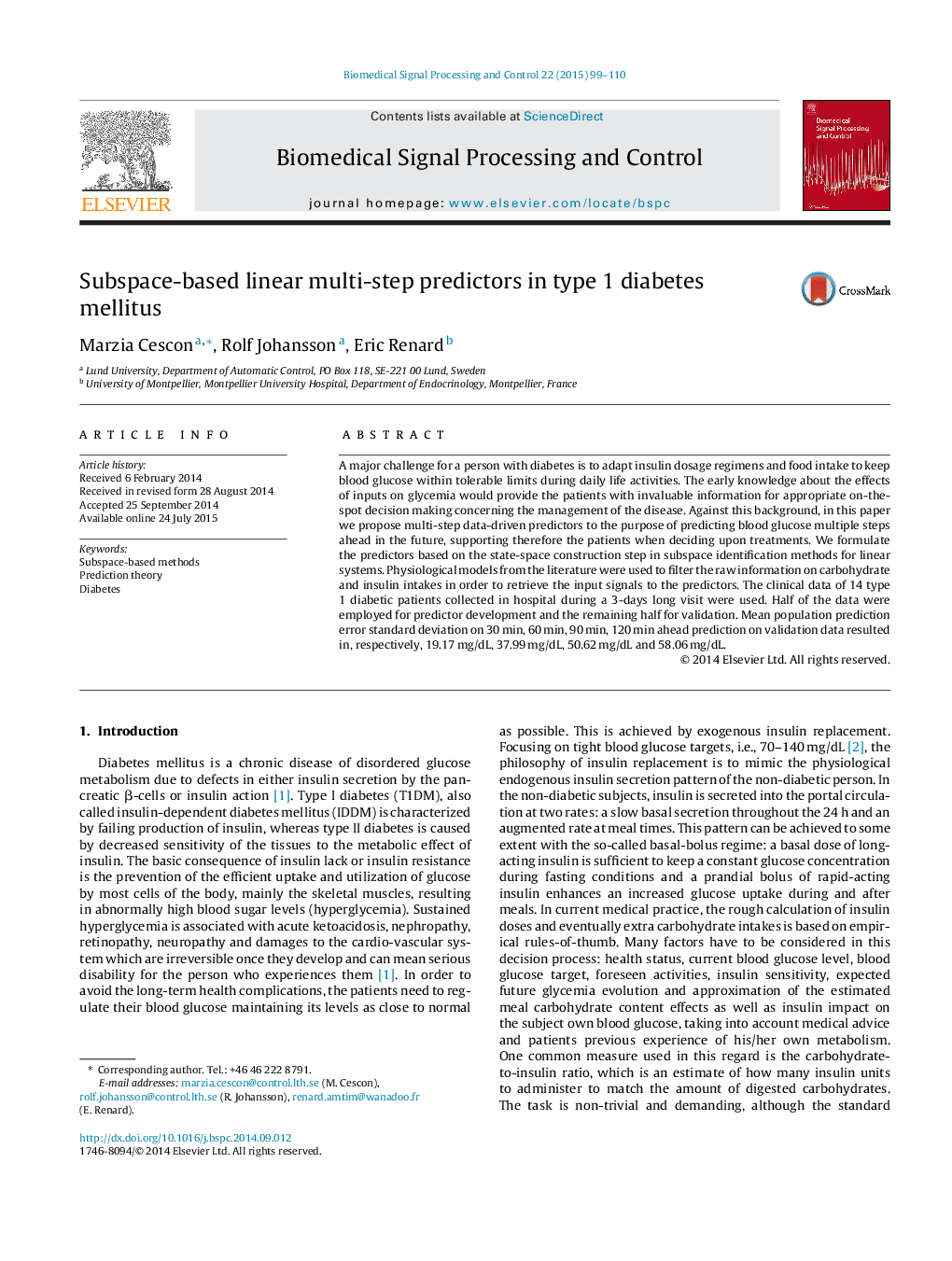| Article ID | Journal | Published Year | Pages | File Type |
|---|---|---|---|---|
| 557577 | Biomedical Signal Processing and Control | 2015 | 12 Pages |
•Data-driven subspace-based linear multi-step predictors are proposed.•The method exploits orthogonal projection of structured data matrices onto appropriate subspaces.•The implementation is efficient and relies upon LQ-decompositions.•The approach is successful in short-term T1DM glycemia prediction.
A major challenge for a person with diabetes is to adapt insulin dosage regimens and food intake to keep blood glucose within tolerable limits during daily life activities. The early knowledge about the effects of inputs on glycemia would provide the patients with invaluable information for appropriate on-the-spot decision making concerning the management of the disease. Against this background, in this paper we propose multi-step data-driven predictors to the purpose of predicting blood glucose multiple steps ahead in the future, supporting therefore the patients when deciding upon treatments. We formulate the predictors based on the state-space construction step in subspace identification methods for linear systems. Physiological models from the literature were used to filter the raw information on carbohydrate and insulin intakes in order to retrieve the input signals to the predictors. The clinical data of 14 type 1 diabetic patients collected in hospital during a 3-days long visit were used. Half of the data were employed for predictor development and the remaining half for validation. Mean population prediction error standard deviation on 30 min, 60 min, 90 min, 120 min ahead prediction on validation data resulted in, respectively, 19.17 mg/dL, 37.99 mg/dL, 50.62 mg/dL and 58.06 mg/dL.
